July 2009
DDR3 Design Considerations
for PCB Applications
AN111
Jon Burnett
Freescale™ and the Freescale logo are trademarks of Freescale Semiconductor, Inc. All other product or
service names are the property of their respective owners. © Freescale Semiconductor, Inc. 2009.
TM
�
Introduction
►Customers are beginning to inquire and / or expect DDR3 support
on their new product offerings, especially as the price cross-over
point nears.
►The first device with DDR3 support was 8572.
►The first development system with DDR3 will be P2020.
►As such, more and more FSL products are supporting DDR3
moving forward.
►In this session we will look at key distinctions between DDR3 vs.
DDR1 & DDR2, with key emphasis placed on elements that are
important to hardware / board design engineers.
Freescale Semiconductor Confidential and Proprietary Information. Freescale™ and the Freescale logo are trademarks
of Freescale Semiconductor, Inc. All other product or service names are the property of their respective owners. © Freescale Semiconductor, Inc. 2007.
2
TM
�
Overview of Presentation
► DDR3 SDRAM Attributes.
► DDR Controller Highlights.
► DDR3 Signaling.
► DDR3 Routing Methodology.
► Memory Pins, New Features.
► PCB Design Pitfalls.
Freescale Semiconductor Confidential and Proprietary Information. Freescale™ and the Freescale logo are trademarks
of Freescale Semiconductor, Inc. All other product or service names are the property of their respective owners. © Freescale Semiconductor, Inc. 2007.
3
TM
�
DDR3 – Same players
► Supported by all major memory vendors
Freescale Semiconductor Confidential and Proprietary Information. Freescale™ and the Freescale logo are trademarks
of Freescale Semiconductor, Inc. All other product or service names are the property of their respective owners. © Freescale Semiconductor, Inc. 2007.
4
TM
�
Cross-over Point
Freescale Semiconductor Confidential and Proprietary Information. Freescale™ and the Freescale logo are trademarks
of Freescale Semiconductor, Inc. All other product or service names are the property of their respective owners. © Freescale Semiconductor, Inc. 2007.
5
TM
�
DDR SDRAM Highlights and Comparison
Feature/Category
Package
Densities
Voltage
I/O Signaling
DDR1
TSOP
128Mb -1Gb
2.5V Core
2.5V I/O
SSTL_2
Internal Memory Banks
4
DDR2
DDR3
BGA only
256Mb - 4Gb
1.8V Core
1.8V I/O
SSTL_18
4 to 8
BGA only
512Mb -8Gb
1.5V Core
1.5V I/O
SSTL_15
8
Data Rate
Termination
200-400 Mbps
400–800 Mbps
800–1600 Mbps
Motherboard termination to
VTT for all signals
On-die termination for
data group. VTT
termination for address,
command, and control
On-die termination for
data group. VTT
termination for address,
command, and control
Data Strobes
Single Ended
Differential or single
Differential
Freescale Semiconductor Confidential and Proprietary Information. Freescale™ and the Freescale logo are trademarks
of Freescale Semiconductor, Inc. All other product or service names are the property of their respective owners. © Freescale Semiconductor, Inc. 2007.
6
TM
�
DDR SDRAM Highlights and Comparison (cont.)
Feature/Category
DDR1
DDR2
DDR3
Burst Length
CL/tRCD/tRP
Master Reset
ODT
(On-die termination)
Driver Calibration
Write Leveling
BL= 2, 4, 8
(2-bit prefetch)
15 ns each
BL= 4, 8
(4-bit prefetch)
15 ns each
BL= 8 (Burst chop 4)
(8-bit prefetch)
12 ns each
No
No
No
No
No
Yes
Yes
Yes
Off-Chip (OCD)
On-Chip with ZQ pin (ZQ
cal)
No
Yes
Freescale Semiconductor Confidential and Proprietary Information. Freescale™ and the Freescale logo are trademarks
of Freescale Semiconductor, Inc. All other product or service names are the property of their respective owners. © Freescale Semiconductor, Inc. 2007.
7
TM
�
Typical Freescale DDR2/3 Controller Highlights
►Interface speed
• DDR2 - up to 800 MHz
• DDR3 - up to 800 MHz today (MPC8572, MPC8526)
Evaluating higher speeds 1066 MHz and up to 1600 MHz
►Support Interface width
• 64/72-bit data bus – high end product
• 32/40-bit data bus – low end products
• 16/24-bit data bus – low end products
►Discrete, unbuffered, and registered DIMM support
• Memory device densities from 64Mb – through 8Gb
• Up to four chip selects supported
• Support for x8/x16 DDR devices – x4 devices are not supported
►Full ECC (Error Correction Code) support
• Single error correction/detection, double error detection
• Error injection for software development
►Self refresh support
Freescale Semiconductor Confidential and Proprietary Information. Freescale™ and the Freescale logo are trademarks
of Freescale Semiconductor, Inc. All other product or service names are the property of their respective owners. © Freescale Semiconductor, Inc. 2007.
8
TM
�
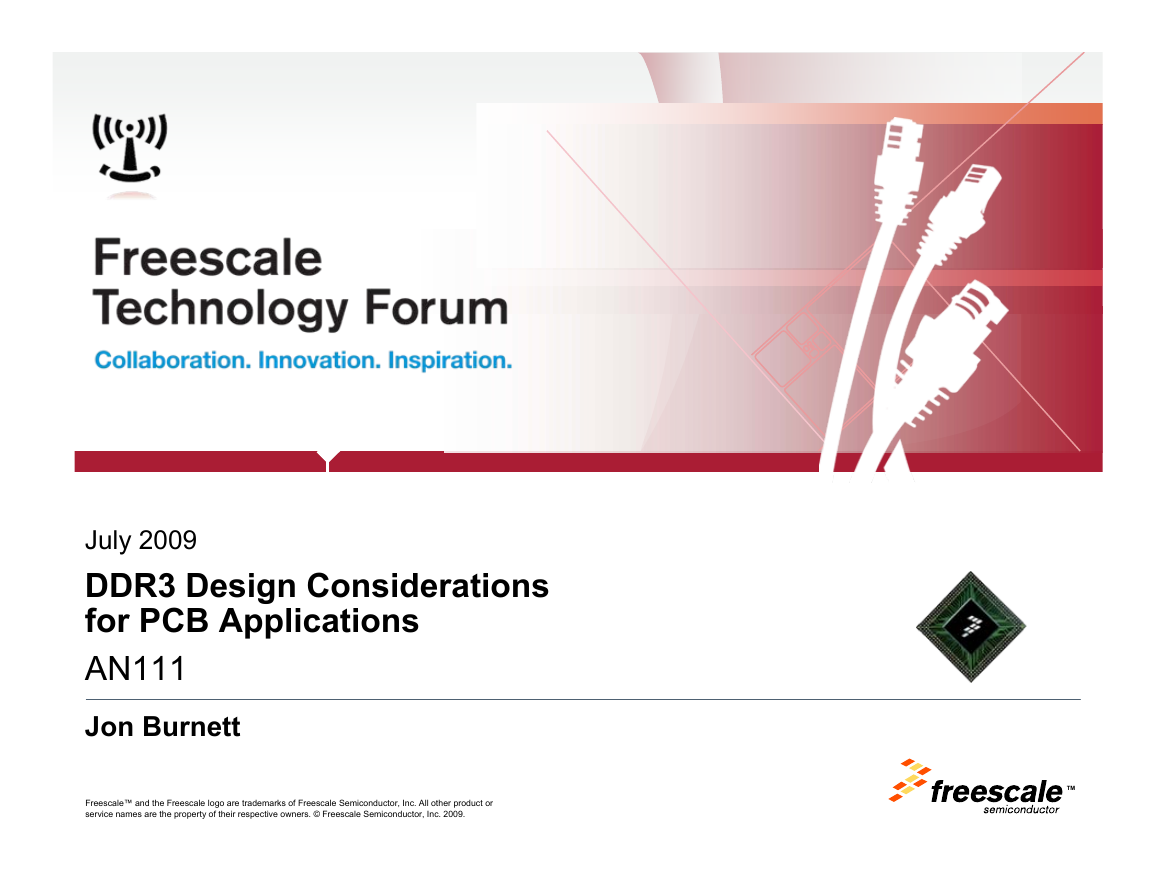
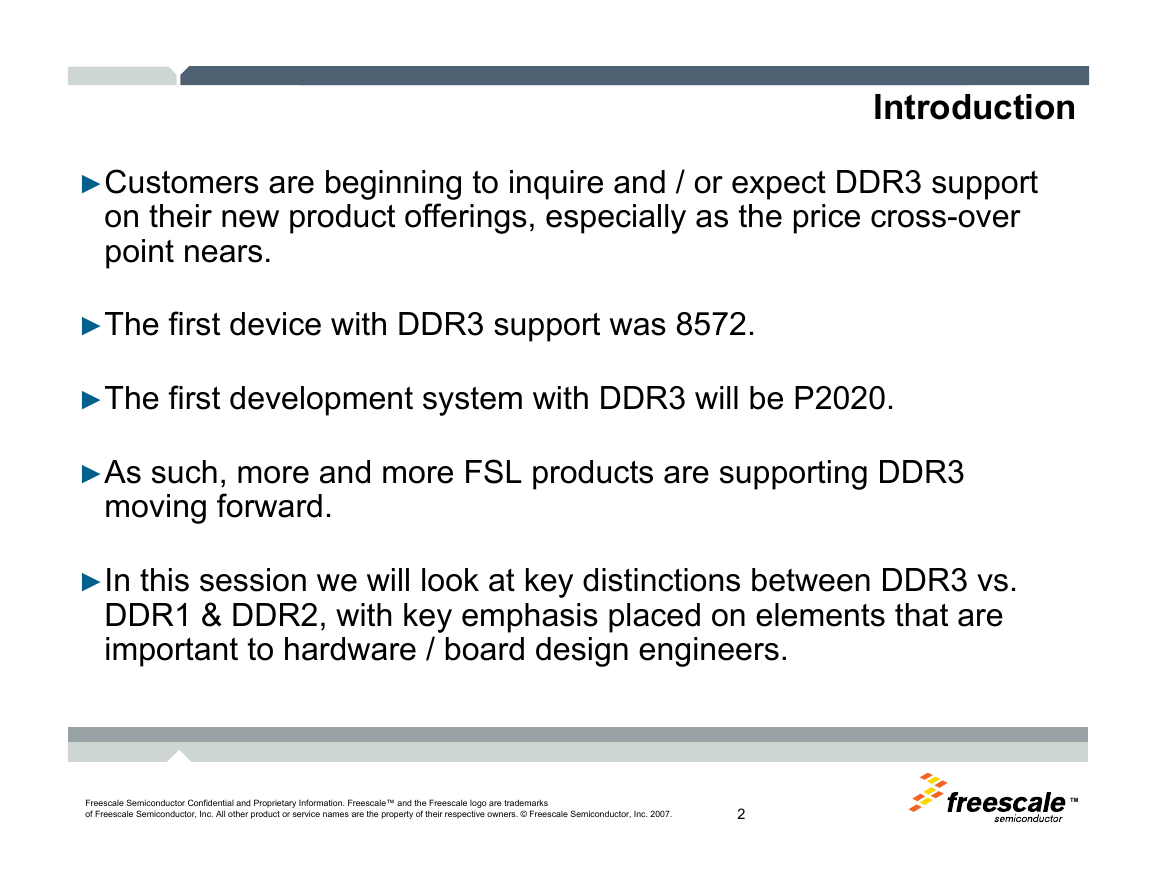
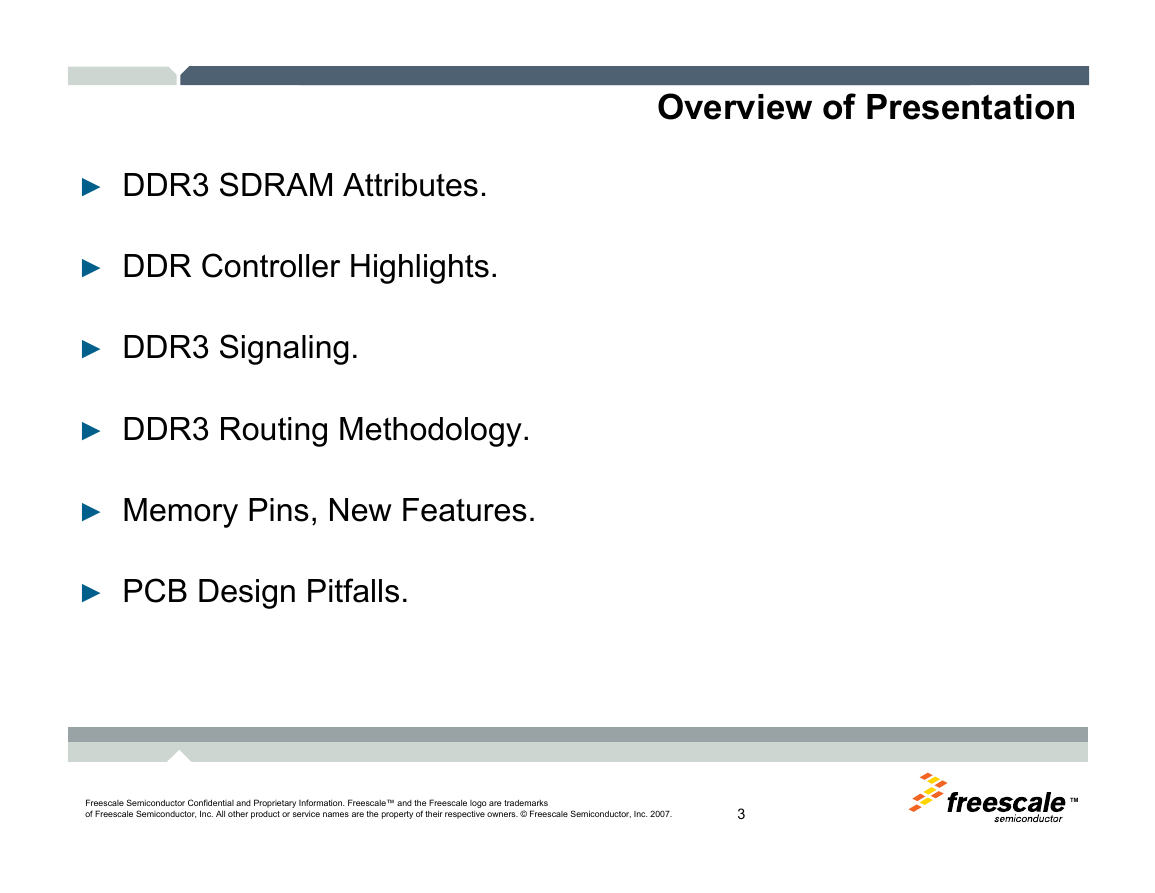
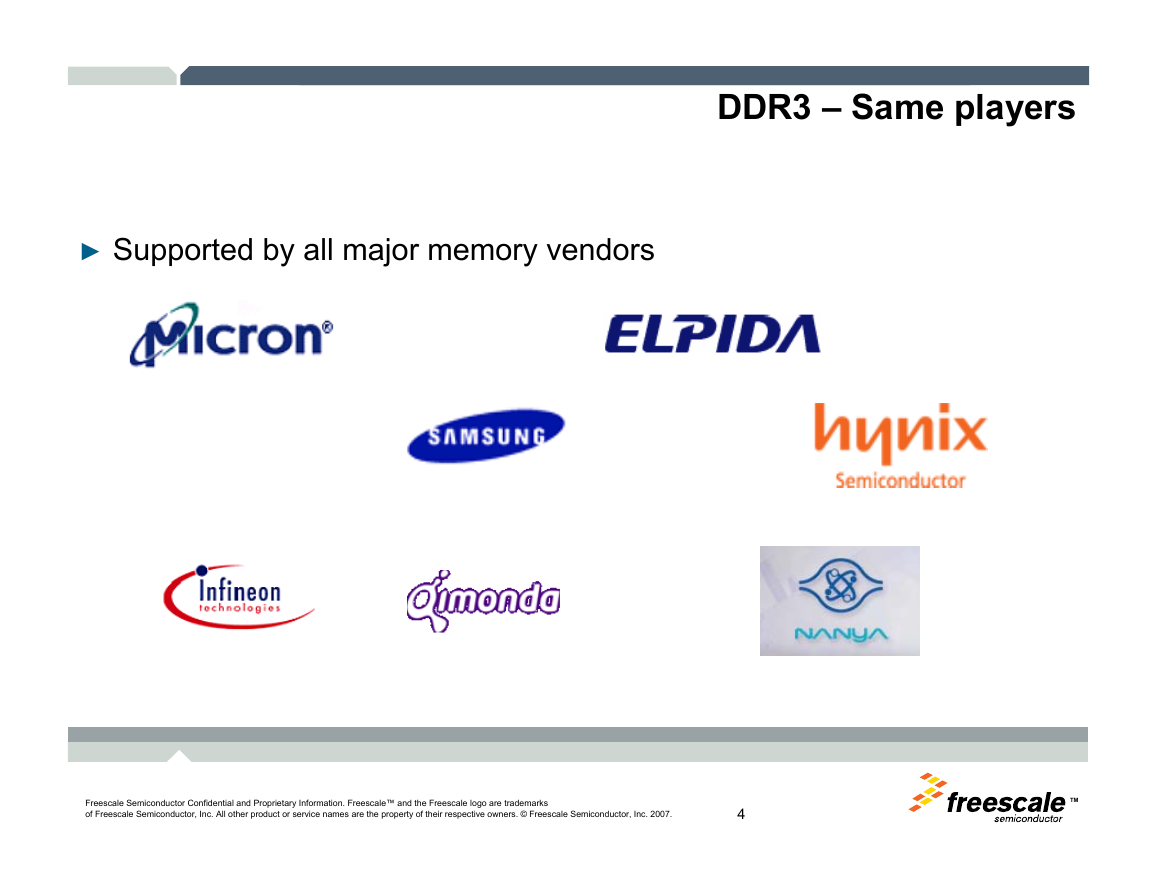
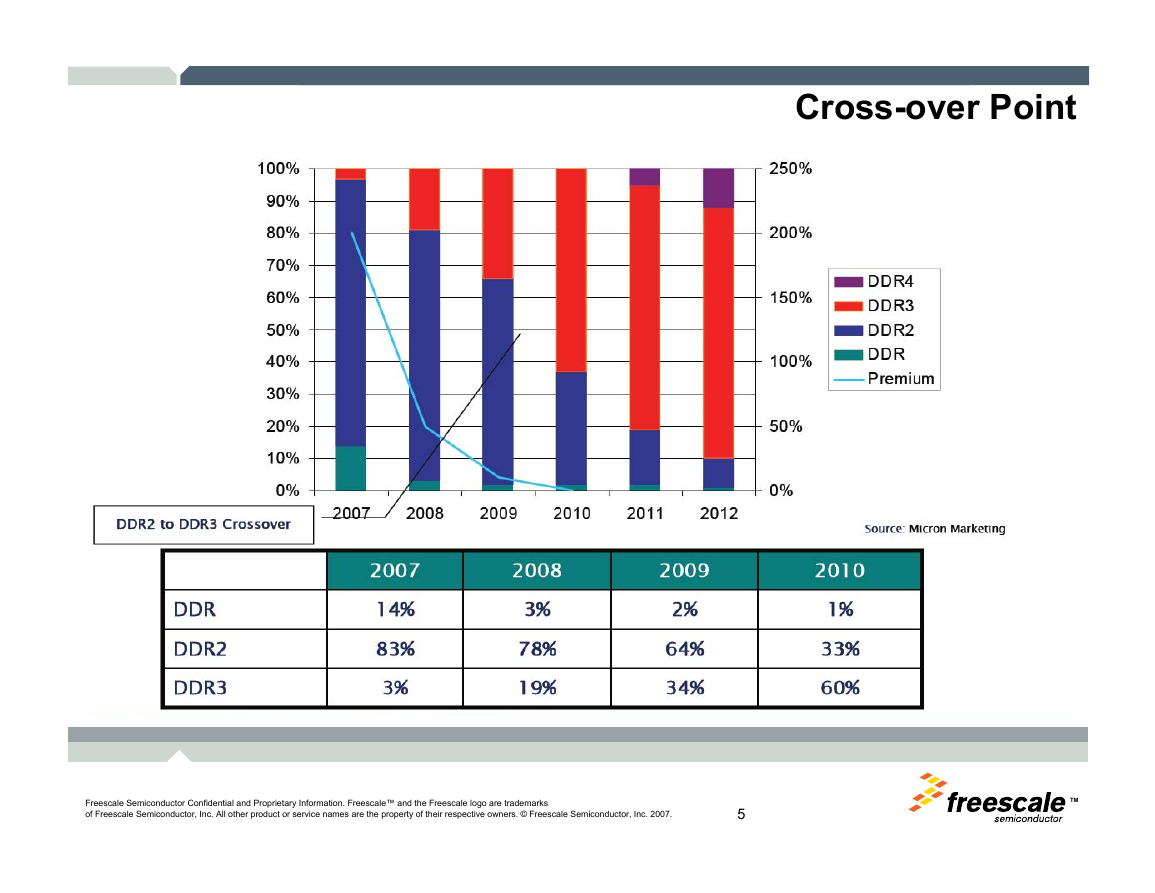
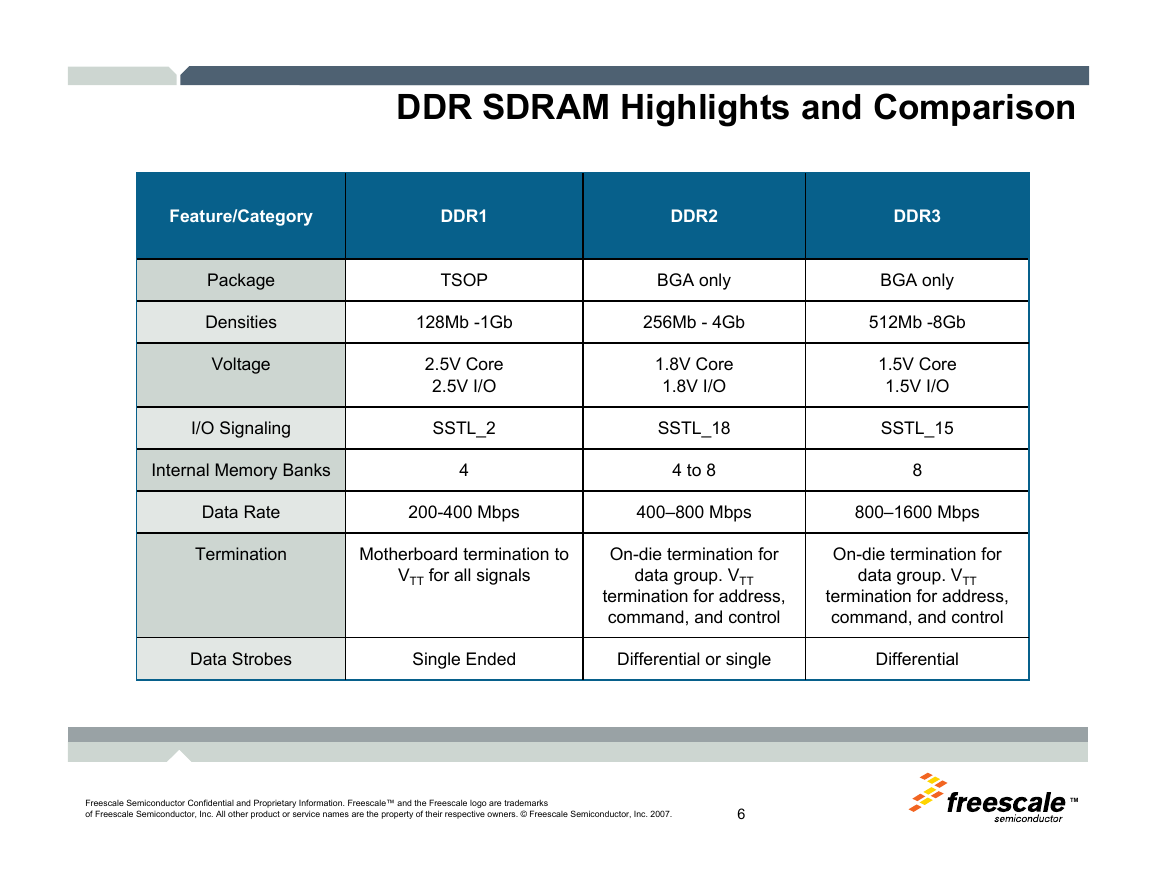
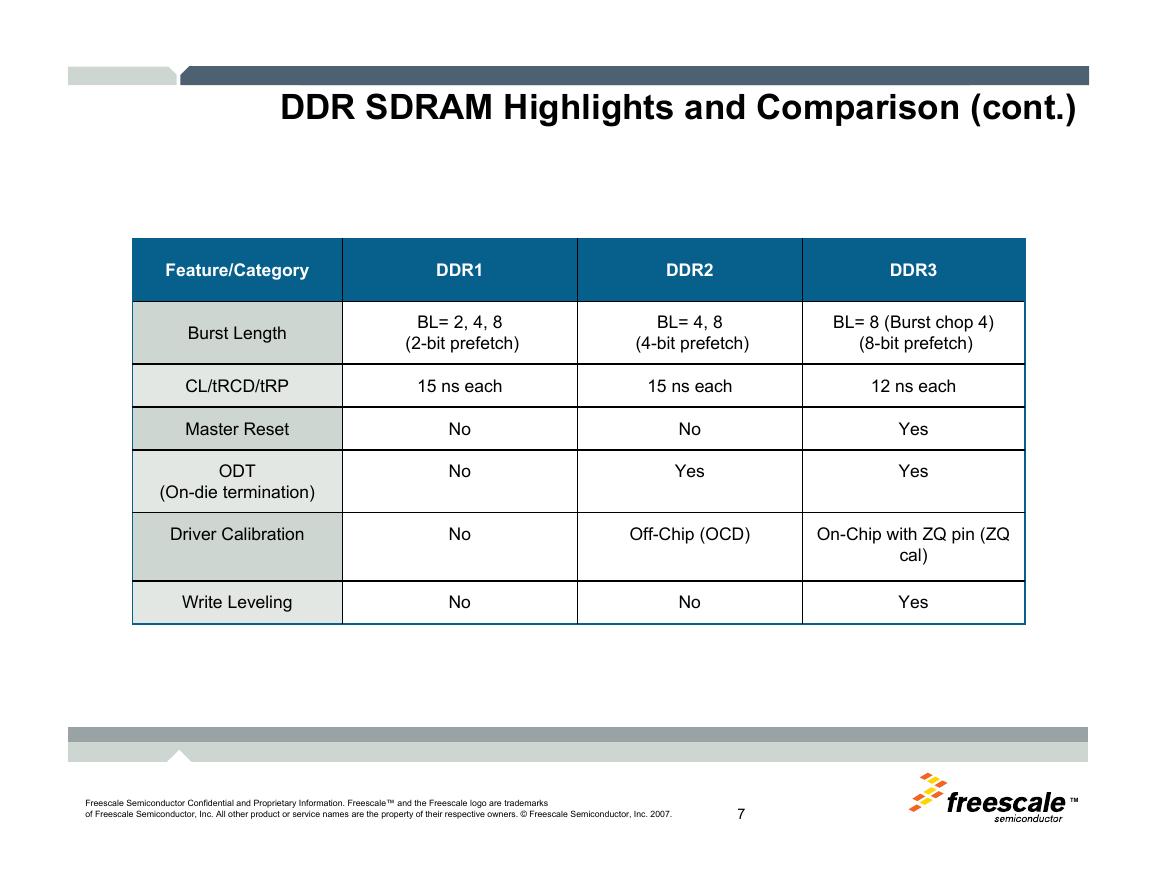
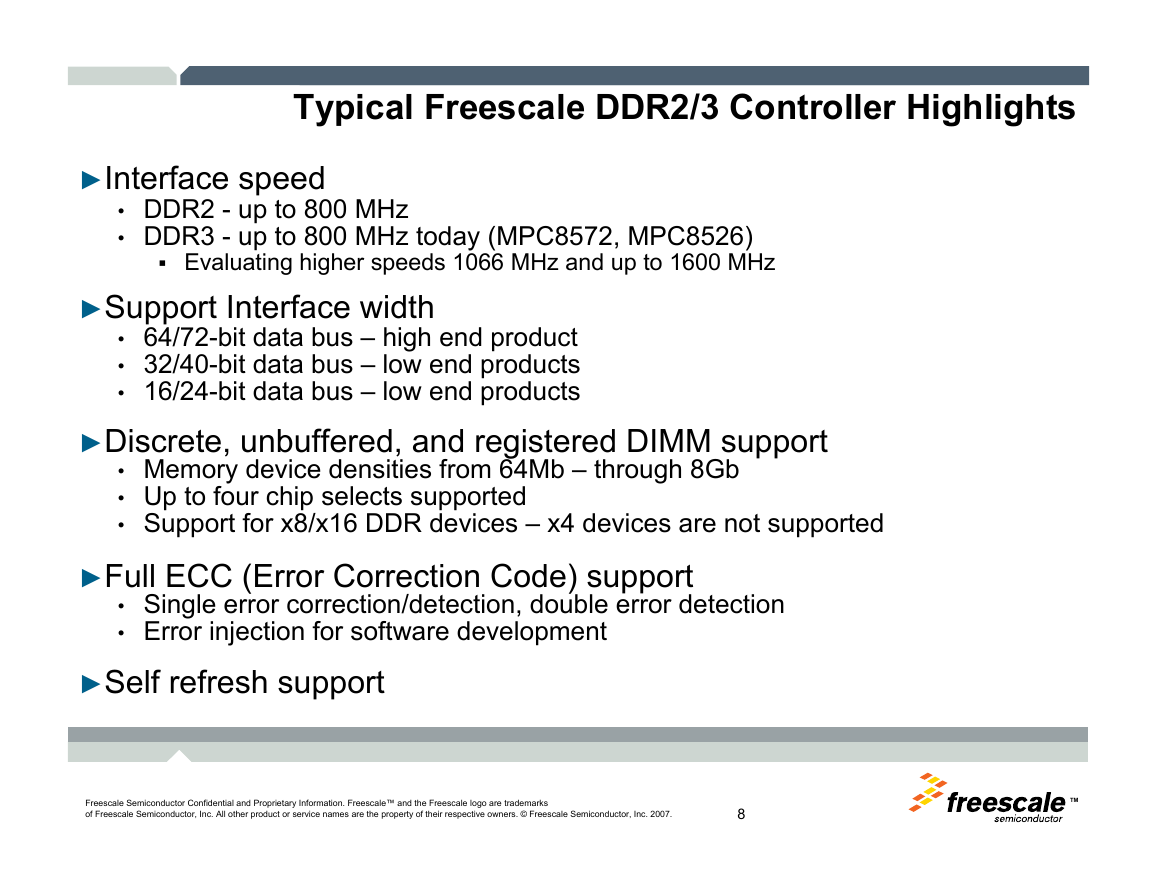








 2023年江西萍乡中考道德与法治真题及答案.doc
2023年江西萍乡中考道德与法治真题及答案.doc 2012年重庆南川中考生物真题及答案.doc
2012年重庆南川中考生物真题及答案.doc 2013年江西师范大学地理学综合及文艺理论基础考研真题.doc
2013年江西师范大学地理学综合及文艺理论基础考研真题.doc 2020年四川甘孜小升初语文真题及答案I卷.doc
2020年四川甘孜小升初语文真题及答案I卷.doc 2020年注册岩土工程师专业基础考试真题及答案.doc
2020年注册岩土工程师专业基础考试真题及答案.doc 2023-2024学年福建省厦门市九年级上学期数学月考试题及答案.doc
2023-2024学年福建省厦门市九年级上学期数学月考试题及答案.doc 2021-2022学年辽宁省沈阳市大东区九年级上学期语文期末试题及答案.doc
2021-2022学年辽宁省沈阳市大东区九年级上学期语文期末试题及答案.doc 2022-2023学年北京东城区初三第一学期物理期末试卷及答案.doc
2022-2023学年北京东城区初三第一学期物理期末试卷及答案.doc 2018上半年江西教师资格初中地理学科知识与教学能力真题及答案.doc
2018上半年江西教师资格初中地理学科知识与教学能力真题及答案.doc 2012年河北国家公务员申论考试真题及答案-省级.doc
2012年河北国家公务员申论考试真题及答案-省级.doc 2020-2021学年江苏省扬州市江都区邵樊片九年级上学期数学第一次质量检测试题及答案.doc
2020-2021学年江苏省扬州市江都区邵樊片九年级上学期数学第一次质量检测试题及答案.doc 2022下半年黑龙江教师资格证中学综合素质真题及答案.doc
2022下半年黑龙江教师资格证中学综合素质真题及答案.doc